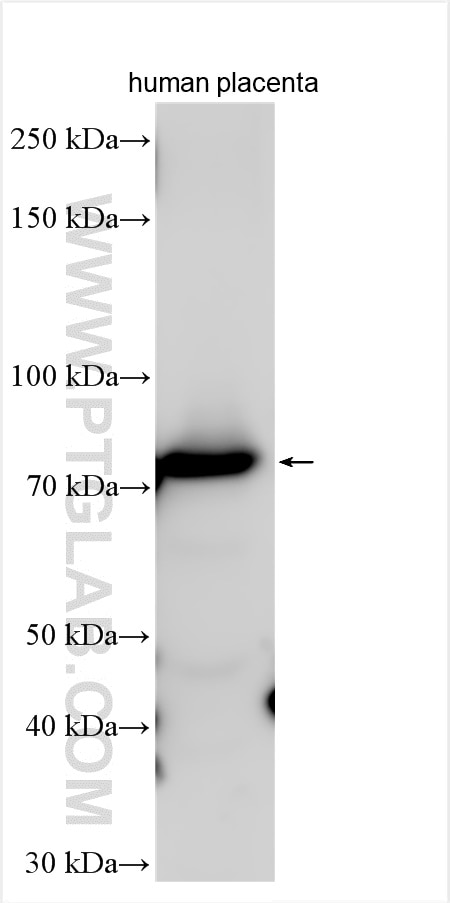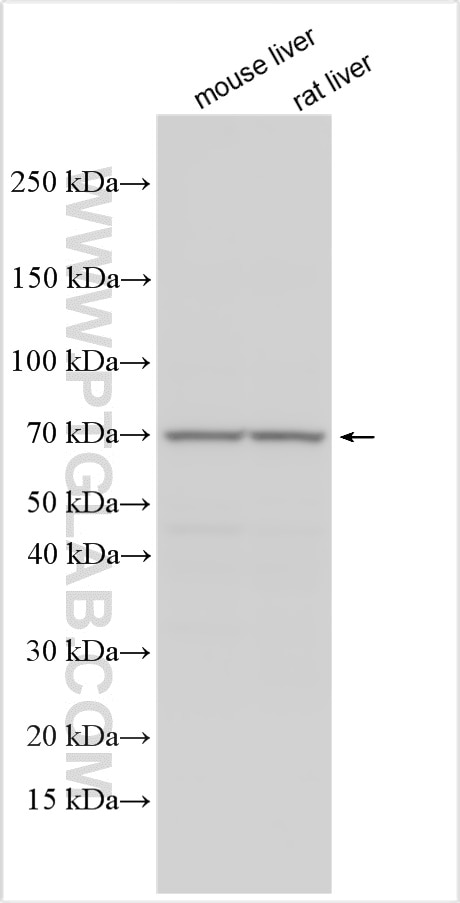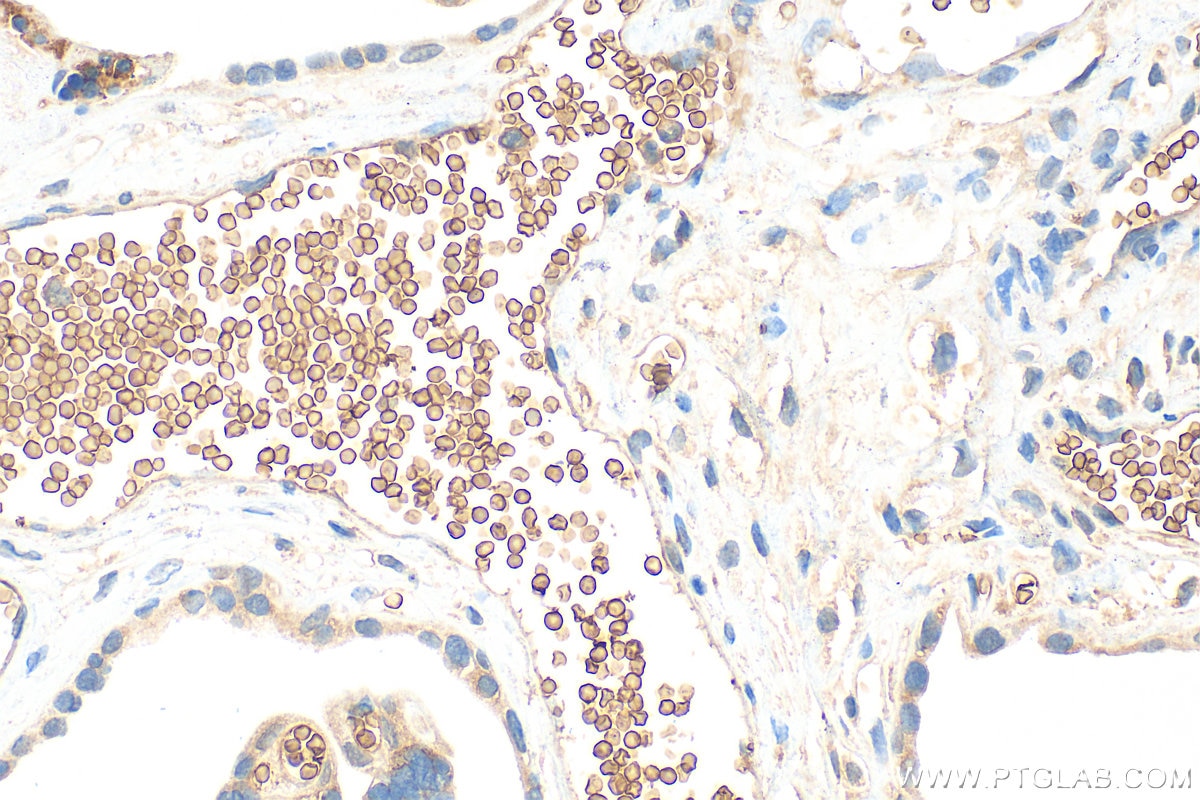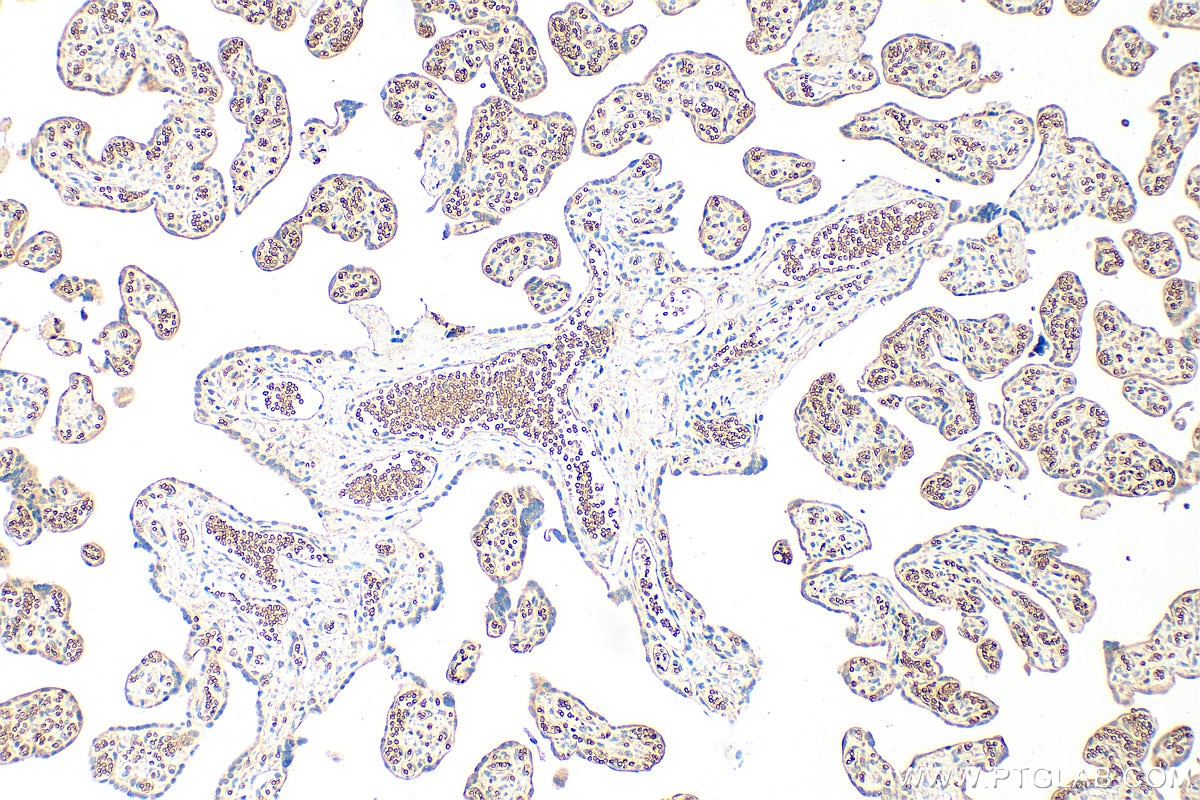Validation Data Gallery
Tested Applications
| Positive WB detected in | human placenta tissue, mouse liver tissue, rat liver tissue |
| Positive IHC detected in | human placenta tissue Note: suggested antigen retrieval with TE buffer pH 9.0; (*) Alternatively, antigen retrieval may be performed with citrate buffer pH 6.0 |
Recommended dilution
| Application | Dilution |
|---|---|
| Western Blot (WB) | WB : 1:500-1:2000 |
| Immunohistochemistry (IHC) | IHC : 1:50-1:500 |
| It is recommended that this reagent should be titrated in each testing system to obtain optimal results. | |
| Sample-dependent, Check data in validation data gallery. | |
Product Information
27443-1-AP targets EPB42 in WB, IHC, ELISA applications and shows reactivity with human, mouse, rat samples.
| Tested Reactivity | human, mouse, rat |
| Host / Isotype | Rabbit / IgG |
| Class | Polyclonal |
| Type | Antibody |
| Immunogen |
CatNo: Ag23556 Product name: Recombinant human EPB42 protein Source: e coli.-derived, PGEX-4T Tag: GST Domain: 446-691 aa of BC096093 Sequence: EVLERVEKEKMEREKDNGIRPPSLETASPLYLLLKAPSSLPLRGDAQISVTLVNHSEQEKAVQLAIGVQAVHYNGVLAAKLWRKKLHLTLSANLEKIITIGLFFSNFERNPPENTFLRLTAMATHSESNLSCFAQEDIAICRPHLAIKMPEKAEQYQPLTASVSLQNSLDAPMEDCVISILGRGLIHRERSYRFRSVWPENTMCAKFQFTPTHVGLQRLTVEVDCNMFQNLTNYKSVTVVAPELSA 相同性解析による交差性が予測される生物種 |
| Full Name | erythrocyte membrane protein band 4.2 |
| Observed molecular weight | 72 kDa |
| GenBank accession number | BC096093 |
| Gene Symbol | EPB42 |
| Gene ID (NCBI) | 2038 |
| RRID | AB_3085962 |
| Conjugate | Unconjugated |
| Form | |
| Form | Liquid |
| Purification Method | Antigen affinity purification |
| UNIPROT ID | P16452 |
| Storage Buffer | PBS with 0.02% sodium azide and 50% glycerol{{ptg:BufferTemp}}7.3 |
| Storage Conditions | Store at -20°C. Stable for one year after shipment. Aliquoting is unnecessary for -20oC storage. |
Background Information
EPB42, also known as Protein 4.2, is amongst the most abundant protein components of the erythrocyte membrane, representing approximately 5% membrane content or ~2.5 × 105 copies/cell. EPB42 binds to the cytoplasmic domain of band 3, which serves as a site for the anchorage of several membrane skeletal proteins(PMID: 19269200, 12049649). EPB42 is a 72 kDa peripheral membrane protein.
Protocols
| Product Specific Protocols | |
|---|---|
| IHC protocol for EPB42 antibody 27443-1-AP | Download protocol |
| WB protocol for EPB42 antibody 27443-1-AP | Download protocol |
| Standard Protocols | |
|---|---|
| Click here to view our Standard Protocols |




